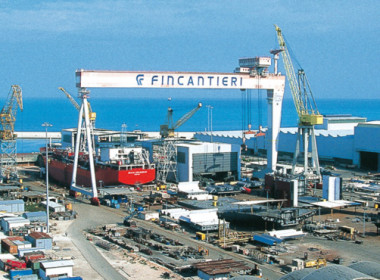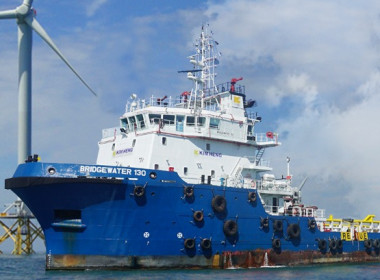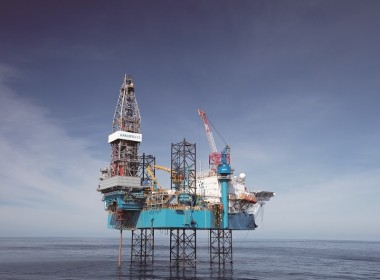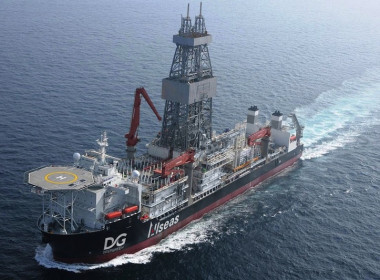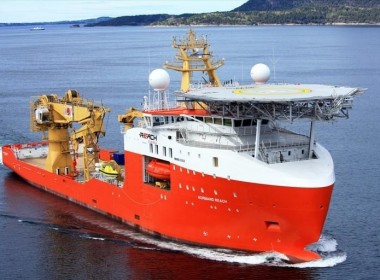COLUMN | Ocean Mining: DeepGreen to list and become The Metals Company as major car makers and WWF press for moratorium on seabed mineral extraction [Offshore Accounts]

The day after Good Friday – Saturday, April 3 – was a good day for DeepGreen Metals, the company that plans to mine polymetallic nodules from the deep abyssal plain of the Pacific Ocean in the Clarion-Clipperton zone, west of Baja, California (map here).
DeepGreen announced (here) that it was to become a public company via a merger with Sustainable Opportunities Acquisition Corporation (SOAC), a special purpose acquisition company (SPAC). SOAC is an entity whose only asset is US$300 million of cash “held in trust” and was floated as a public company in May 2020. From that merger of DeepGreen and SOAC, a new company will be born on the New York Stock Exchange, The Metals Company.
DeepGreen’s shareholders, which include Swiss mining giant Glencore, Maersk Supply Service, and offshore construction player Allseas, will take 76 per cent of the shares in The Metals Company. The public investors in SOAC will hold ten per cent. The combined entity will have an equity value of just under US$3 billion. It will hold over US$500 million in cash.
What’s happening?
As you know, we are always sceptical of companies that make major announcements during major public holidays like Christmas, New Year, and Easter (see here for Borr Drilling’s Christmas surprise). And the DeepGreen announcement is one of the most remarkable we have seen.
The business case for The Metals Company is set out here, a thirty-four page slideshow presentation, of which three pages are a statutory warning for Canadian investors, and one is a general disclaimer for everyone. If you want to see a glimpse into how the new company reckons it will revolutionise the mining industry and revolutionise the supply chain for electric vehicles, it is definitely worth reading.
This form of listing by merging with SOAC means that DeepGreen avoids the need for an initial public offering (IPO). Such stock market titans as Virgin Galactic, troubled electric truck maker Nikola, and US$10 billion electric van maker Arrival have merged their way onto public exchanges in this manner recently. There has been a veritable mania for SPACs in the last year, as more and more companies have floated in this way.
Why?
Intriguing forecasts allowed by The Metals Company
SPACs are allowed to make non-binding forecasts about how their businesses will develop in the future, in a way that companies listing via an IPO are not permitted to do by regulators. The disclosure requirements for a merger with a SPAC are much looser than the disclosure requirements for an IPO.
For a business with zero revenue, like DeepGreen and The Metals Company, “the ability to make these projections is a God-send,” as Jamie Powell put it in the Financial Times recently (here). “Forecast in your investor deck that sales in 2025 will make the current valuation reasonable and, suddenly, a multi-billion dollar price tag for a nascent company doesn’t seem quite so mad.”
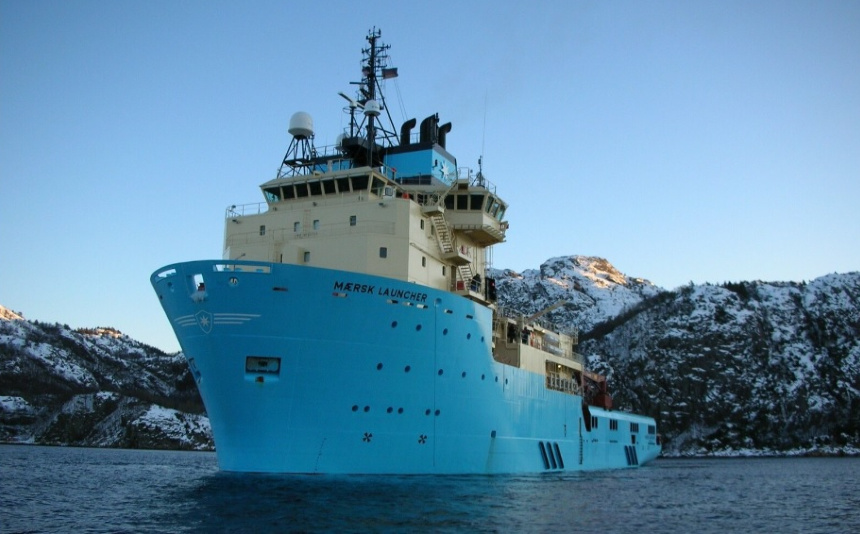
Remember, The Metals Company is a business that has no revenues and no existing production of metal of any kind from its polymetallic nodules, although the AHTS Maersk Launcher has recovered over 80 tonnes of wet nodules for research purposes.
Nobody has successfully managed to commercially harvest the nickel, copper, manganese, and cobalt from the nodules in 4,500 metres of water since interest was first stimulated in seabed mining in the 1970s, when ecologist Hjalmar Theil visited the Clarion-Clipperton with some prospective deep sea miners. Belgian dredging company DEME was planning a trial of a deep-sea mining machine from its Global Sea Mineral Resources in the Pacific last year, Nature magazine reported here, but it was called off after a technical hitch.
One licence is worth over US$6 billion?
The Metals Company’s only assets are some rights to the seabed in the Pacific Ocean. It claims a valuation of over US$2 billion and says it is “attractively valued entry multiple for a unique resource with significant upside, proven technology, timing of estimated first production/revenue aligned with expected significant shortages in key battery metals.”
The presentation suggests that in 2027, the company will be generating earnings before interest, tax, depreciation and amortisation (EBITDA) of US$2 billion, and that its NORI-D acreage in the Clarion-Clipperton has a “net present value of US$6.8 billion” with “a net present value of US$31.3 billion for the full portfolio.”
This valuation is based in the company spending US$2.2 billion of capital expenditure on module harvesting equipment for the NORI-D project. That buys quite a lot of second-hand drillships.
Bold claims.
Surge in demand for batteries for vehicles
The backdrop to CEO Gerard Barron’s positive outlook is the rise of the electric vehicle.
The Metals Company cites an expected shortage of nickel after a slump in recent discoveries of new deposits by terrestrial miners (here) and a surge in demand for its four key minerals, as worldwide electric vehicle production increases 3,500 per cent from 1.4 million units in 2020 to an estimated 55.5 million units in 2040.
The Metals Company claims global battery demand will increase 1,700 per cent between 2019 and 2030.
Simple business case
The business case for The Metals Company is very simple. The company states its ocean-floor licences hold “enough nickel, copper, manganese, and cobalt in situ to electrify 280 million EVs.”
Mining.com recently ranked the business’ nickel prospect in Clarion-Clipperton as the largest and most exciting in the world here.
The Metals Company forecasts that it will be the second lowest cost nickel producer on the planet, after Norilsk Nickel of Russia, when DeepGreen’s NORI-D concession is harvested for nodules in 2027. Crucially, The Metals Company cites DeepGreen’s own internal analysis for this estimate of the cost of production, rather than any third party.
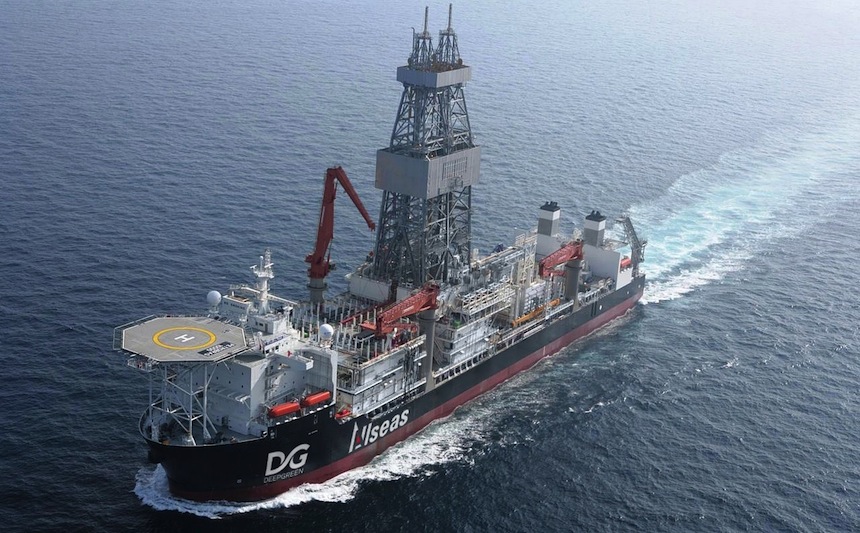
Readers will note that the vessel that will perform the collection of the modules, the drillship formerly known as Vitoria 10000, owned and operated by Allseas, has not yet been converted for the role. The presentation says that Allseas has a team of 55 working on the project.
Eco-friendly ocean nodule extraction?
The Metals Company claims that its ocean mining is incredibly environmentally friendly, producing its minerals with 90 per cent less CO2 emissions than conventional onshore mines.
“Like fossil fuel extraction,” the company said, “conventional metals extraction comes at a steep cost to people and the planet, leading to vast deforestation in some of the most biodiverse areas on the planet. This is generating the world’s largest industrial waste stream and gigatons of emissions, poisoning ecosystems and people’s health, and driving potential labour exploitation, including child labour.”
This combination of perceived environmental sustainability, booming demand for lithium-ion batteries from electric vehicles, and abundant resources on the seabed would surely justify a multi-billion-dollar valuation?
The Metals Company effectively points to the soaring success of Tesla, and contrasts its shiny little pebbles of minerals sitting benignly on the ocean floor with the miserable cobalt mines in the Democratic Republic of Congo, which produce over half of the world’s current supply. Do you want your car battery-produced with the blood of child slaves in a war zone?
Unfortunately, there are a couple of issues to overcome, even forgetting that the technology for the commercial recovery of the nodules is completely unproven and that estimates of harvesting rates and unit costs of production are, at best, wild guesses, based on extremely limited data.
Boycott by potential major customers
The first major problem is that a few days days before the creation of The Metals Company was announced, several major potential customers called for a ban on ocean-floor mining.
We’re not talking about Greenpeace, Friends of the Earth, and the WWF, who have always opposed seafloor mining as destructive and environmentally damaging. Their resistance remains steadfast and they have called ocean-floor mining the activity that will have the largest environmental footprint on the planet, and not in a good way. Instead, the WWF had persuaded customers to join its proposed boycott.
As reported here on March 31, Korean battery maker Samsung SDI, car makers BMW and Volvo, and Google (no introduction needed), said that they “will not buy any metals produced from deep sea mining before the environmental risks are comprehensively understood.”
One might have thought such a statement might have been mentioned in The Metals Company’s investor call presentation very clearly. It wasn’t. The four big, high-profile companies explicitly stated that they would exclude any deep ocean minerals from their supply chains, and that they would not finance any ocean mining companies, like The Metals Company, either.
Ouch.
Environmental pressure mounts
The WWF’s https://www.noseabedmining.org/ website makes the case against The Metals Company very clear:
“Before any potential deep seabed mining occurs, it needs to be clearly demonstrated that such activities can be managed in a way that ensures the effective protection of the marine environment.”
A study of microbial communities at the site of a 1989 deep-sea mining test suggests the fragile ecosystem may take half a century to fully recover. Nature magazine found (here) that following an experiment at simulating mining on the abyssal plain of the Pacific Ocean in 1989, “scientists have returned to the site four times, most recently in 2015. The site has never recovered. In the ploughed areas, which remain as visible today as they were 30 years ago, there’s been little return of characteristic animals such as sponges, soft corals, and sea anemones.”
Nature quoted pioneering biologist Hjalmar Thiel as saying that “the disturbance is much stronger and lasting much longer than we ever would have thought.”
Nature also interviewed deep-sea biologist Craig Smith of the University of Hawaii in Honolulu. Smith has spent 30 years studying the communities in the Clarion-Clipperton Zone, where, the magazine reported “he has collected sea cucumbers, sea urchins, soft corals, starfish, sea anemones, worms and much more. Roughly 90 per cent of the animal species his group has collected are new to science or undescribed. Among these are rare species not found anywhere else in the deep sea. Smith thinks that, even now, scientists have sampled just 0.01 per cent of the total area of the CCZ.”
It will be interesting to see how long Maersk Supply Services continues its involvement in the project if the scientists are able to demonstrate the rich marine life that The Metals Company’s operations threaten.
The cold and dark abyssal plain of the Pacific, 4,000 metres below the surface, is barely known to science. The impacts of nodule harvesting could cause disruption of the fragile and little understood ecosystem, and the extinction of many species which are not even known to marine biologists. Environmentalists see this as a crime against the planet. Companies like BMW and Volvo see it as a branding and public relations disaster that would wreck their brands. Who would buy a new battery-powered electric car from a manufacturer that the WWF claimed was committing ecocide on corals and a magic habitat of weird and wonderful species?
That thought might wipe the smile off Mr Barron’s face. You can’t claim sustainability whilst threatening a marine ecosystem, and the footprint of the proposed mining licences far exceeds terrestrial mining operations, which are much more compact, albeit potentially more devastating locally.
Regulatory risk on the whole ocean mining concept
The International Seabed Authority (ISA) is a 168-member body created by the United Nations to both promote and regulate seabed mining. This in itself might be seen as a conflict of interest.
The ISA is the body that has granted 29 exploration licences in international waters for contractors like DeepGreen to exploit the seabed. Each contractor must be sponsored by a national government. DeepGreen/The Metals Company’s licences are variously sponsored in by Nauru, Tonga, and Kiribati, depending on the concession.
Tonga wins small, The Metals Company wins big, humanity as a whole?
Interestingly, The Metals Company’s own cashflow project for the NORI-D project shows that its own free cash flow would typically be nearly twice as much as it paid in taxes and royalties. One can see why the Kingdom of Tonga with its population of 104,000 would benefit from US$573 million of taxes in 2029 if The Metals Company’s plan goes to forecast, but the company itself will rake in “earnings” of US$910 million itself from the project that year.
That’s nice for the shareholders and executives, but what about the other seven billion people on the planet? What do we get from the privatisation of the ocean floor in international waters?
Final exploitation regulations for seabed mining were expected to be put in place by the ISA in 2020, but they are delayed due to Covid-19 travel restrictions, which have prevented delegates meeting to discuss and agree on the new rules governing the sector.”The ISA has committed to completing and adopting the code on an expedited basis and we expect the code to be adopted no later than 2023,” The Metals Company noted in its presentation.
Now that the WWF have really pulled out the big guns in their campaign, we can expect the rules to be the subject to fierce debate.
Is the public really going to sit by and let a UN body hand over millions of hectares of seabed to private companies to profit from whilst scientists don’t understand the ecosystem properly and many rare and unknown species could be put at risk?
Good luck with that sell, Mr Barron. I foresee significantly more studies will be needed and test operations before widescale ocean bed nodule harvesting is allowed.
Not as easy as it looks
So, several major customers have indicated that they won’t buy minerals produced from the polymetallic nodules, major environmental pressure groups are firmly opposed to the venture, and the regulatory framework to proceed with the ocean-floor mining is in limbo.
One industry player with whom I spoke commented on Volvo and Google’s statement:
“It screams of pandering and a desperate bid to get Facebook and Twitter likes. The bit that stands out the most is the repeated use of ‘until risks to environment are comprehensively understood.’ The definition of ‘comprehensively understood’ will vary with each person and their desperation for a source of metals.
“I have a feeling that there is a link here to the various class actions being brought against electric car manufacturers for buying child labour-produced cobalt from the DRC and that they want some good news before some bad is announced. That’s my hunch.”
But there’s more.
Some (more) red flags
Half of the six senior executives mentioned in The Metal Company’s investor presentation have backgrounds with McKinsey and Company, the troubled and often ethically challenged management consultancy, which recently paid out US$570 millions in a settlement over the marketing of highly addictive opioids in the USA. McKinsey consultants are famous for their arrogance, raw brain power, and love of abstract slide deck, bereft of practical detail. The consulting firm has proved controversial for its role in state pillage and corruption in South Africa, the jailing of its former CEO for insider trading, and other scandals (here).
The involvement of so many former McKinsey consultants may taint the whole venture with the veneer of greed and self-interest for which the consulting company is notorious. In no sane world would anyone trust a group of ex-McKinsey people to protect the marine environment if they stood to get rich quickly from driving species to extinction by pillaging the seabed for rare metals.
Head of strategy planned a mine on the moon
DeepGreen’s head of strategy and business development, Erika Ilves, is a former McKinsey consultant, and her Linkedin resume (here) reads like a bizarre work of surreal fiction. As co-founder of Shackleton Energy Company between 2013 and 2016, she planned to mine the moon for water, which her company then planned to use as rocket fuel.
It’s not clear who would be purchasing the lunar distilled rocket juice or where the rockets would be going, but I am not making it up when I quote her resume as stating:
“There are billions of tonnes of water ice on the poles of the Moon. We are going to extract it, turn it into rocket fuel and create fuel stations in Earth’s orbit. Just like on Earth you won’t get far on a single tank of gas, what we can do in space today is straight-jacketed by how much fuel we can bring along from the Earth’s surface.
“We can achieve low transportation cost in space if fuel and materials are extracted and transported not from Earth but from a lower gravity well – the Moon. The prerequisite for scaling multiple civilisation challenges is establishing extraction and manufacturing operations on the Moon and creating a lunar supply chain of fuel, materials and structures.”
I don’t know what Ms Ilves has been smoking, but she’s clearly a big, visionary thinker. Quite how that fits with a very mundane business of picking up millions of small rocks on the seabed with a converted deepwater drillship in an environmentally friendly manner is not clear.
What The Metals Company needs is solid proof that its technology works, and that it is not going to damage the ocean eco-system.
Not as bad as it seems
The critical issue for The Metals Company in the short term is whether DeepGreen can access the US$300 million of SOAC’s cash and list through the merger with the SPAC. With the mania for SPACs and everything related to electric batteries and electric vehicles, it looks like it can and will succeed in its listing.
That gives The Metals Company the financial resources to develop its recovery technology, and time to placate its environmental critics, and obtain regulatory approval from the ISA.
One expert I spoke to says he felt that ocean floor recovery was the lesser of two evils:
“Having worked mineral exploration on four continents, I’ve seen the damage that is wrought by poorly managed terrestrial mining. Having spent a fair bit of time with the Dutch guys developing the seabed crawlers for DeepGreen, and seeing the effort going into minimising the impact, I’d happily buy seabed nodule-derived copper, cobalt nickel, etc, over just about any from Africa or Asia.”
Of course, whether a US$3 billion valuation is fair value for the company and whether lithium-ion batteries will still be the fuel of the future if and when The Metals Company begins its mining operations later this decade, are different questions entirely.
Enjoy the electric vehicle bull market.
Background reading
Our previous coverage of DeepGreen and its ill-fated predecessor Nautilus thirteen months ago is here.
The WWF’s campaign for a moratorium to protect the ocean floor is here.
SOAC is a SPAC, a brief overview of the frenzy of mergers into SPACs is here.
For some of the issues with SPACs, Institutional Investor has excellent coverage here.
Once again, the business case for The Metals Company is set out here.
The Smithsonian Magazine recently published an overview of the evidence for why the environmental groups are so sceptical of The Metals Company’s plans here.
The Metals Company has taken over DeepGreen’s excellent Twitter feed and changed the user-handle. It is now here.
ISA website is here.


